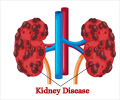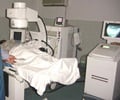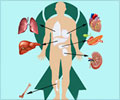According to Robert A. Montgomery, domino transplants can increase the usefulness of selfless kidney donors.
According to Robert A. Montgomery, M.D., chief of transplantation at the Johns Hopkins University School of Medicine domino transplants can increase the usefulness of selfless kidney donors.
Domino transplants strategy if used widely can also be able to solve the problem of scarcity in organ donation and reduce the waiting list. The results of the study are published in the British journal Lancet. Domino transplants also serve the needs of multiple recipients. Under the terms of the domino-paired donation program, a kidney transplant patient who has a willing but incompatible living organ donor is matched with an altruistic, compatible donor. The incompatible kidney from the recipient's intended donor is then domino-matched with the next compatible patient on the United Network of Organ Sharing (UNOS) waiting list. This strategy can be further used to enable a triple transplant by simply adding an additional incompatible donor-recipient pair to the chain.However, because there is currently no national system of this kind in place, Montgomery says altruistic donor kidneys often end up on an Internet donation site or at individual transplant centers and so are subject to variable ethical criteria. For example, in some cases, the kidney goes to the patient deemed to have the best chance for long-term survival; in others, the organ is given to the patient in greatest need or the candidate at the top of the UNOS waiting list, regardless of outcome or need. ‘With domino-paired donation, all three of these ethical tenets are satisfied,’ says Montgomery. Specifically, the likelihood of a good outcome is increased by spreading the risk of recipient graft loss across more people.
The neediest patients are served, since in many cases patients with incompatible donors suffer disproportionately long waiting times. Those on the UNOS waiting list also benefit by receiving the last kidney in the chain. To date, Hopkins surgeons have performed two triple and one double domino-paired kidney transplant initiated by three altruistic donors who were able to provide eight recipients with compatible kidneys. According to Montgomery, if conventional allocation strategies had been used, only three of these recipients would have benefited from these altruistic donations. UNOS reports that since the first altruistic donor came forward in 1998, 302 altruistic kidney transplants have been performed in the United States. Using a computer simulation program, Montgomery and his team calculated that 583 transplants could have been achieved if the domino-donation model had been in place.
Altruistic donor programs have come under recent attack by critics who argue that altruistic donors may be vulnerable to coercion and have suspect motivations. Montgomery says altruistic donors go through the same rigorous and comprehensive psychological and social evaluation programs as any other person coming forward to be evaluated for living organ donation. ‘In light of the crisis the transplant community continues to experience in terms of the number of available organs,’ Montgomery says, ‘the fact that people are coming forward voluntarily to help ease this shortage should not be treated with suspicion but rather should be considered morally praiseworthy. These are good people doing good things.’
Source: Eurekalert










